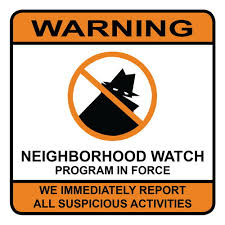We recently heard about the horrific attack by a student who used a knife to wound twenty people. I heard some people say “at least he didn’t have a gun.” Knives being used as weapons in mass attacks is something that has been on my mind for some time. I believe that a knife in the hand of someone willing to use it as a weapon is just as dangerous, if not more so, than a gun. Warning; this article will be more graphic than my usual.
Here are some obvious facts about knives that you’re likely already aware of but which bear repeating. Every home has kitchen knives, but if someone wanted an easier-to-conceal folding knife, one can be purchased at any Walmart, Target or host of other locations, without any kind of permit. Many states have banned certain types of knives, such as switchblades. Some states have limitations on the length of the blade, but I don’t know if there are any states that ban the carrying of knives altogether. A small folding knife can be just as dangerous as tactical one.
Knives are incredibly easy to conceal, hidden until a sudden attack. I carry a Glock 19, which is considered a “compact” handgun. The only place I can carry it that does not print (show a visible bulge) is in the small of my back, which is hardly the most ideal place to carry for me. I can carry a very large folding knife and it is impossible to tell it’s in my waistline or in my pocket.
In Haganah we practiced knife and gun defenses and in close proximity (within an arm’s length away), guns were always easier to defend against. This is obviously over-simplifying it, but we were taught gun takeaways in close proximity that moved you out of the way of the barrel. If the barrel isn’t pointing at you, the gun cannot hurt you. Often the takeaways put your hands on the gun as you move from the line of the barrel, which allows you to strip the gun away from your attacker. Below is one such takeaway. The person talking is the creator of Haganah, who has many years of martial arts training. I had no previous martial arts training and learned this takeaway in one session. Some of the other takeaways are a bit more complex, but I felt very comfortable with them after a few classes. I believe this is because the attacker has the gun trained on you, no matter how they’re holding it. The attacker knows that if the barrel isn’t pointed at you, the gun can’t shoot you.
Knife disarms are another beast entirely. Some of the defenses require a block. If your arm is not at 90 degrees, the attackers’ momentum can deflect the attack into another part of your body. In the video, you’ll notice that you have to pay attention to the angle, because it determines where you move to, and how you trap the attackers arm. I’ll admit I am not the most coordinated person. After a year of Haganah, I still fumbled on knife defenses. Unlike gun attacks, knives are more dangerous when the knife is moving, which inherently makes it harder to defend against them.
In knife defense, you obviously never grab the knife. Even if you trap the attackers hand or arm, he can still grab it with his other hand and continue the attack.
Tueller Drill
The Tueller Drill is a self-defense exercise created by Utah Police Sargent Dennis Tueller. The drill is used to show how little time one has to defend against a knife attack. I have done this drill at the range, standing back to back with another instructor, with yet another instructor keeping time. When the time keeper said “go”, the other man drew and fired twice at the target. At that same time, I took off running. I easily covered 20+ feet by the time he finished his second shot. All of this took 2-3 seconds. This drill showed me that 20 feet is not nearly the large safety zone I once thought it was.
In this drill, the shooter is expecting a whistle or other command that tells them when to draw and fire, and it takes most people 2-5 seconds to draw. If I am Joe Dirtbag, intending to use a knife to threaten or attack you, I am not going to start advertising it 20 feet away. No, I will get as close as I can and give you as little warning as possible. Even if I’m high on PCP and start charging you with my knife and you manage to draw and shoot me, my momentum will most likely continue toward you, giving me the opportunity to attack.
The Following
There is currently a television show about an FBI agent chasing down a man who has a following of homicidal cultists. These people go into public places (restaurants, book stores, train stations, etc.) and randomly stab people. The show is violent and shocking. I am a bit surprised we haven’t seen more of these types of attacks. One such mass knife attack in China recently by ten men armed with knives saw twenty nine people killed and 130 injured.
When I saw the recent school knife attack headline, I immediately wondered if the student who committed the horrific attack had watched The Following.
Granted, the show is drawn from someone’s imagination, but I think the public’s response during the attack is very realistic. There is no sound from the weapon. Often times, the attackers stab multiple people before screams draw attention to them.
When I watch TV or movies, I always try to think about what I would do in that situation. This is one case where always having my back to a wall and situational awareness would be crucial.
Training
Anyone who has fired a gun knows it takes some practice or training to get good at it. For instance, if you want to recover from failures or draw and fire from movement, it takes even more training and practice. Granted, someone could take a gun and some ammo and teach themselves the basics.
However, there is no training needed to use a knife to slash or stab. Unlike a firearm, there are no malfunctions. Under stress, people frequently miss their targets with a firearm, even at close distance. With a knife, there is no distance and while the attacker could miss their first stab, as mentioned above, they are most dangerous when they keep slashing and stabbing.
This is not to say I think using a knife for self-defense is a good idea because it takes no training. On the contrary, I think an untrained person wielding a knife for self-defense is quite possibly giving an attacker a weapon. Hollywood has glamourized knife fighting somewhat, with people coming out unscathed. The first rule of knife fighting, is you’re gonna get cut.
Closing
I would like to know how many deaths each year are attributed to knives versus guns. With the ease of attaining a knife, no training being required and the ease of concealment, maybe you can understand why I said I am surprised we don’t see more mass knife attacks.
If you see someone brandish a knife, please take it just as seriously as you would a gun.
Please click here to vote for Prepared Christian as a top Prepper site!
If you liked this article please think about sharing it on the social media listed below, thanks!






